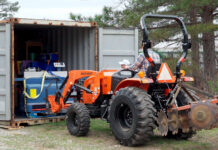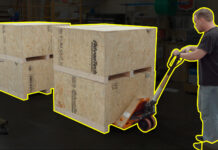Just a quick tip video for using a hand plane. These are general tips so keep in mind that there will be some specific situations where one or more of these do not apply.
- Be a lawn mower and not a shovel.
- Only use “enough” downward pressure.
- Pause in and out & flat in and out.
- Use wax or oil for reduced friction. It helps a LOT!
- Angle the plane to restrict cutting depth.
- Plane in the downhill direction.
Plane restoration video I mentioned in the video: https://jayscustomcreations.com/2016/08/restoring-a-hand-plane-stanley-bailey-5/




Great video. The last tip will really help!
Nice something new for me thanks!
Huge help ! Thanks Jay
Thank you for making that effort for the beginners. Plane is the great tool, not everyone understands that. Looking forward to see the deeper explanation – about the awkward grain (for example), or so.
Thank you again!
Thank you!
Thanks for this video. I knew some of the tips, but I wish I knew about planing at an angle on larger surfaces. I tried to build a cutting board and kept making “grooves” in the board. I tried to “fix” it, but just about ruined it, so I repurposed it. Keep the videos coming, you’re good at it.
Thanks Jay. I know these tips but you have reminded me to do a better job with new people joining the workshop.
Great tips! I just may start using mine now.
Thanks, Jay. My Dad told me , about 60 years ago, to always keep a block of wax handy. He was a cabinetmaker of the old school. The piece of wax always had holes in it (wood screws) slices in it ( hack saw) and was always at arm’s reach.
Remember; when you plane a piece of timber, you’re taking the slice with the wax on it, off the timber. No worry for the finish. Oil ???
Hi Jay. A tip I learned from Spag is to use an old nylon stocking to determine grain direction. Sometimes its hard to tell just by looking at the wood. Rub the nylon on the board and it will travel down the board smoothly in the direction the grain goes and it will catch when going against the grain. Keep the nylon in a place near your vise.
After your blade is razor sharp, and installed properly, hold the plane vertically, on white sheet of paper, and you can then sight down the plane base, and easily adjust both the depth, and angle of the blade.
To get an edge 100% flat, use a pencil to mark lines at a 45 degree angle across the edge, mark where your high spots are, guide the plane to only cut those areas. Because you marked the entire width of the board, you can readily see what area was removed.
I want to thank you for this channel & these instructions are excellent, well done
Jay, as usual, great videos. May I suggest you add a seventh recommendation to your plane video. It’s one my Dad taught me; never ever put a plane down with the blade touching the bench or table. Always lay it down on its side to avoid damaging the sharp edge of your plane iron.
Hey Jay in your 5 tips for hand planes you use a Veritas iron and chip breaker. Is that the Stanley/ Record plane iron and chip breaker for bench planes I notice on the Lee Valley web site?